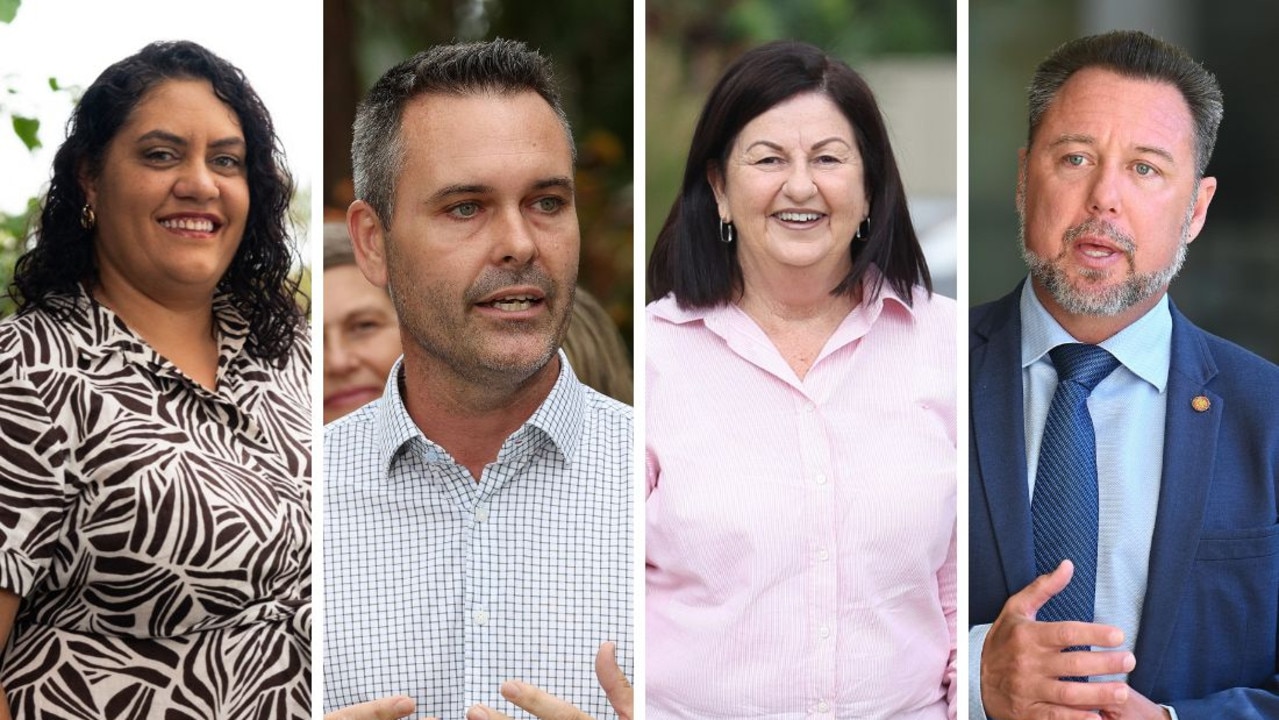Nathaniel Horwath, Chris Latimer, Alex Penfold: Meet the ADF war dogs and their handlers
They may bark like regular dogs but their bites are a whole lot worse. Meet Townsville’s Dogs of War who serve on Australia’s frontlines. See the list.
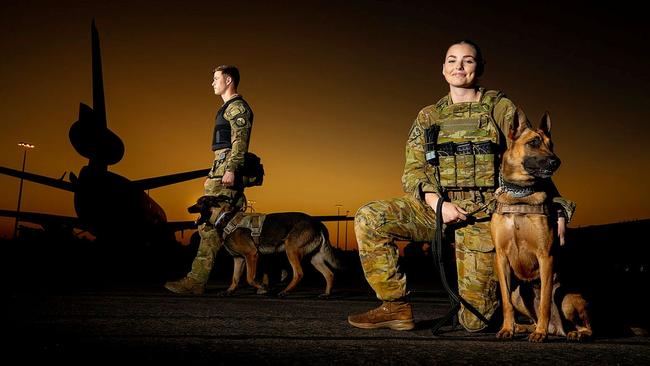
Townsville
Don't miss out on the headlines from Townsville. Followed categories will be added to My News.
These cute canines may look, walk and bark like their regular civilian counterparts but the highly trained dogs of war fill an array of jobs aimed at keeping their handlers and our soldiers safe from harm.
The Australian Defence Force said on Tuesday the Australian Army and the Royal Australian Air Force employed Military Working Dogs and their handlers for a range of roles, including detection, security, emergency response and crime prevention.
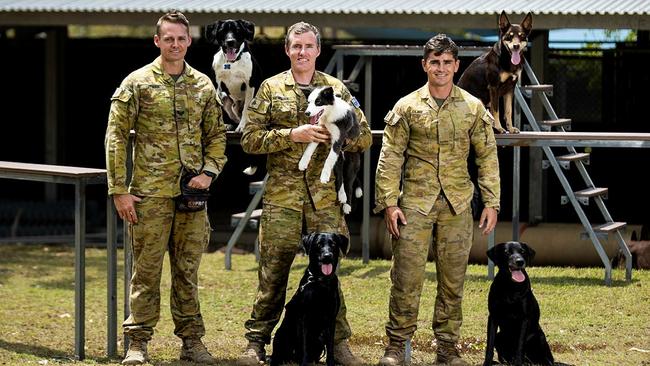
Military Police Dogs
Military Police Dog (MPD) Teams such as those on duty with the 1st Military Police Battalion at Lavarack Barracks in Townsville provide the Australian Army “with detection, deterrence and apprehension capability”.
The ADF said MPDs were paired with a handler and together they complete a 14-week Military Working Dog Handler course held in Amberley, Queensland.
“As a working team, the handlers and their assigned dog are trained in basic obedience, human detection within a field environment and buildings, and human scent tracking.”
A spokeswoman said that following the course, the team spent between six to 12 months training and consolidating their skills before undergoing a certification assessment.
“Once certified, they are qualified to deploy on operations.”
She said that in the barracks and between tasking and operations, handlers were responsible for the maintenance of their dog’s health and welfare.
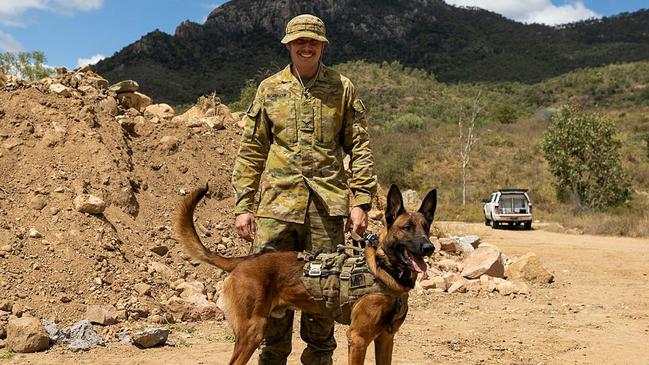
Military Police Dog Chewie
Handler: Lance Corporal Nathaniel Horwath
Chewie is a two-year old male Belgian Malinois. He is an affectionate and well-balanced dog who thoroughly enjoys training with his handler every day, and getting pats from other soldiers. He has been a MPD for one year and is yet to deploy.
This year Chewie and his handler have participated in activities that included capability demonstrations at the 3rd Brigade Lavarack Barracks Open day, population protection and control training and working in support of HMAS Adelaide training for amphibious operations.

Explosive Detection Dogs
Explosive Detection Dogs (EDDs), including those based with the 3rd Combat Engineer Regiment at Lavarack Barracks in Townsville, are used in both Defence and civilian search operations.
The ADF said that domestic tasks included finding weapons, ammunition and explosive threats, clearance of buildings and areas or vehicles for dignitaries and VIPs for events such as the Olympic/Commonwealth Games and G20 conferences.
“While overseas on operation, EDDs enable tactical mobility through routes and buildings by searching and clearing Improvised Explosive Devices, locating cached explosives, weapons and ammunition,” the spokeswoman said.
“EDD teams can also assist in vehicle check point and personnel search.”
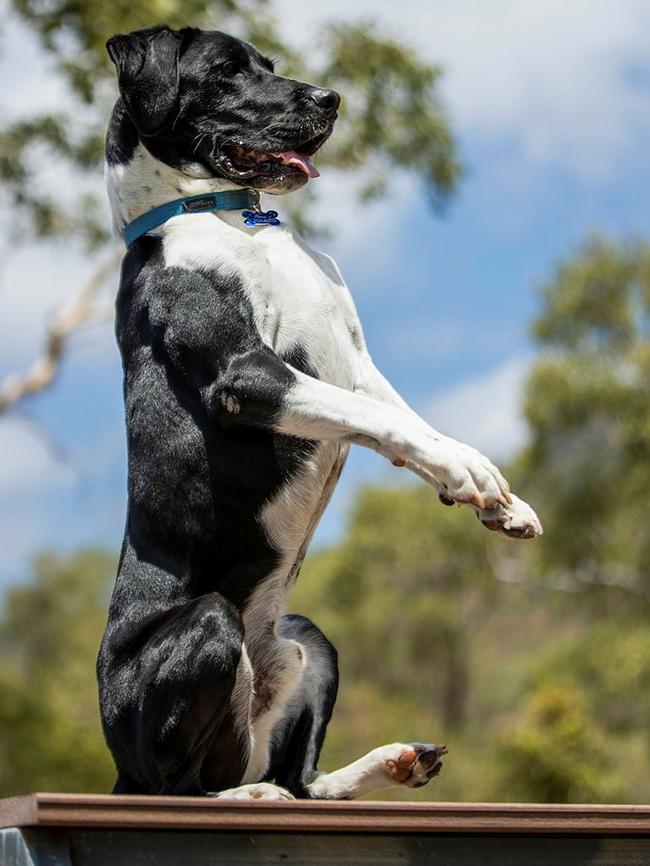
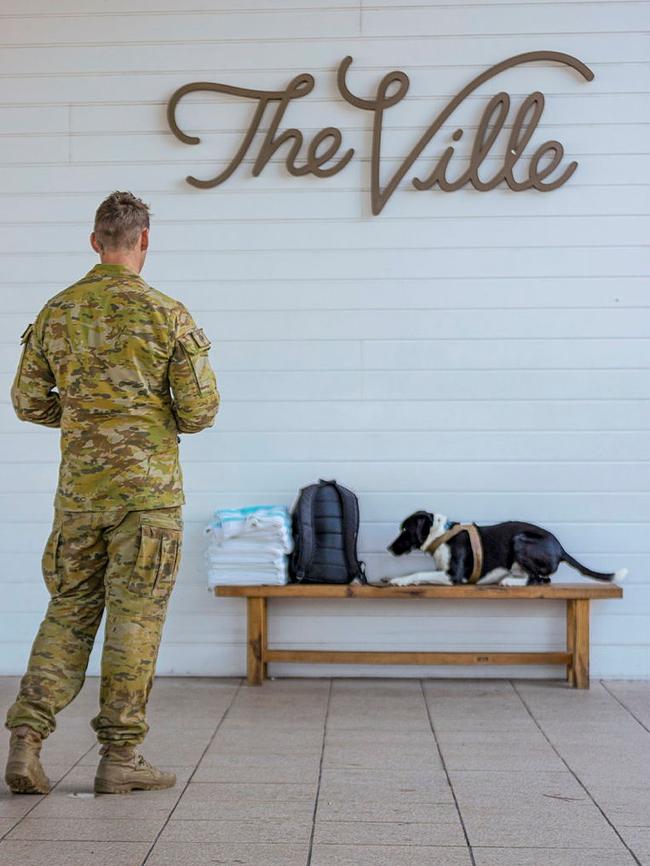
She said that training included a five-month program covering target odour imprinting, directional training, environmental exposures and conditioning, basic obedience, and war-like exposures such as gunfire, explosions and helicopters.
“The handlers also conduct individual training sessions, including odour recognition, placemat directional training, agility and obedience sessions,” she said.
“This is an important part of day-to-day training as it enables focused sessions so EDDs can perform confidently.”
The 3rd Combat Engineer Regiment currently has six EDDs and two training dogs.
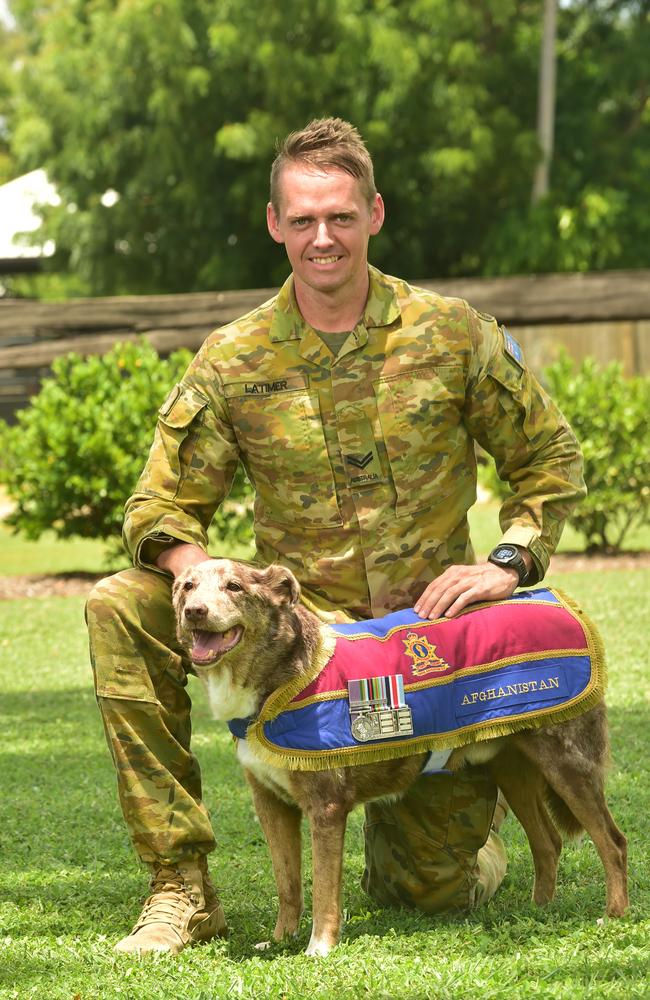
Explosive Detection Dog Bullseye (ret.)
Handler: Corporal Chris Latimer
Corporal Latimer has a retired EDD at home named Bullseye who saw active service in Afghanistan in 2014 with Special Forces. Bullseye, who is now 13 and loves “couch life” served for six years and was Corporal Latimer’s first EDD when he became a handler in 2016. His current EDD in Pablo, a five-year-old Labrador X who enlisted in 2019.
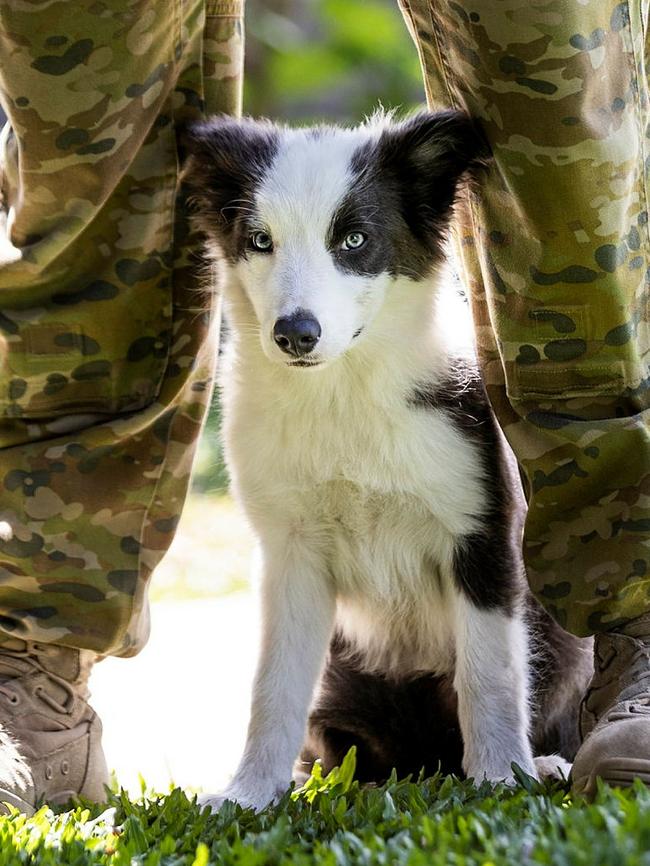

RAAF Military Working Dogs
Royal Australian Air Force Military Working Dogs and their Handlers provide security, crime prevention patrols, emergency response, and intruder detection on RAAF Bases and in deployed locations around the world.
The two main breeds of military working dogs used by the Air Force are the German Shepherd and Belgian Shepherd Malinois.
The ADF said individual handlers were responsible for the care and welfare of their dogs on a daily basis.
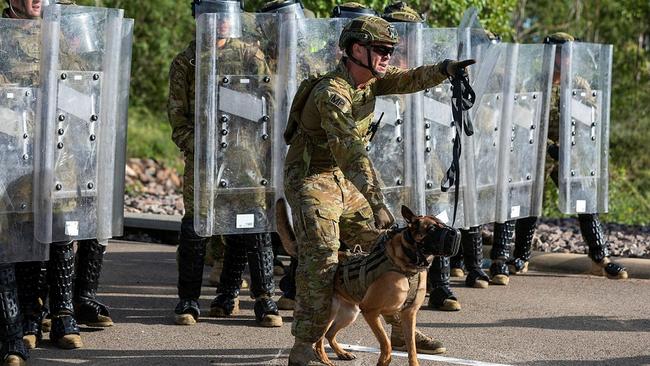
Military Police Dog Azura
Dog Handler: Private Alex Penfold
Azura is a five-year-old female Belgian Malinois who was recently re-teamed with her current handler. Azura loves training and performs very well in all aspects of her job, especially tracking and crowd control. She has been a MPD for three years and has consistently passed her certification assessments.
This year, Azura, who is yet to deploy, and her handler have participated in activities that include capability demonstrations at the 3rd Brigade Lavarack Barracks Open day, Population Protection and Control training, amphibious operations and supporting infantry battalion training.
More Coverage
Originally published as Nathaniel Horwath, Chris Latimer, Alex Penfold: Meet the ADF war dogs and their handlers




